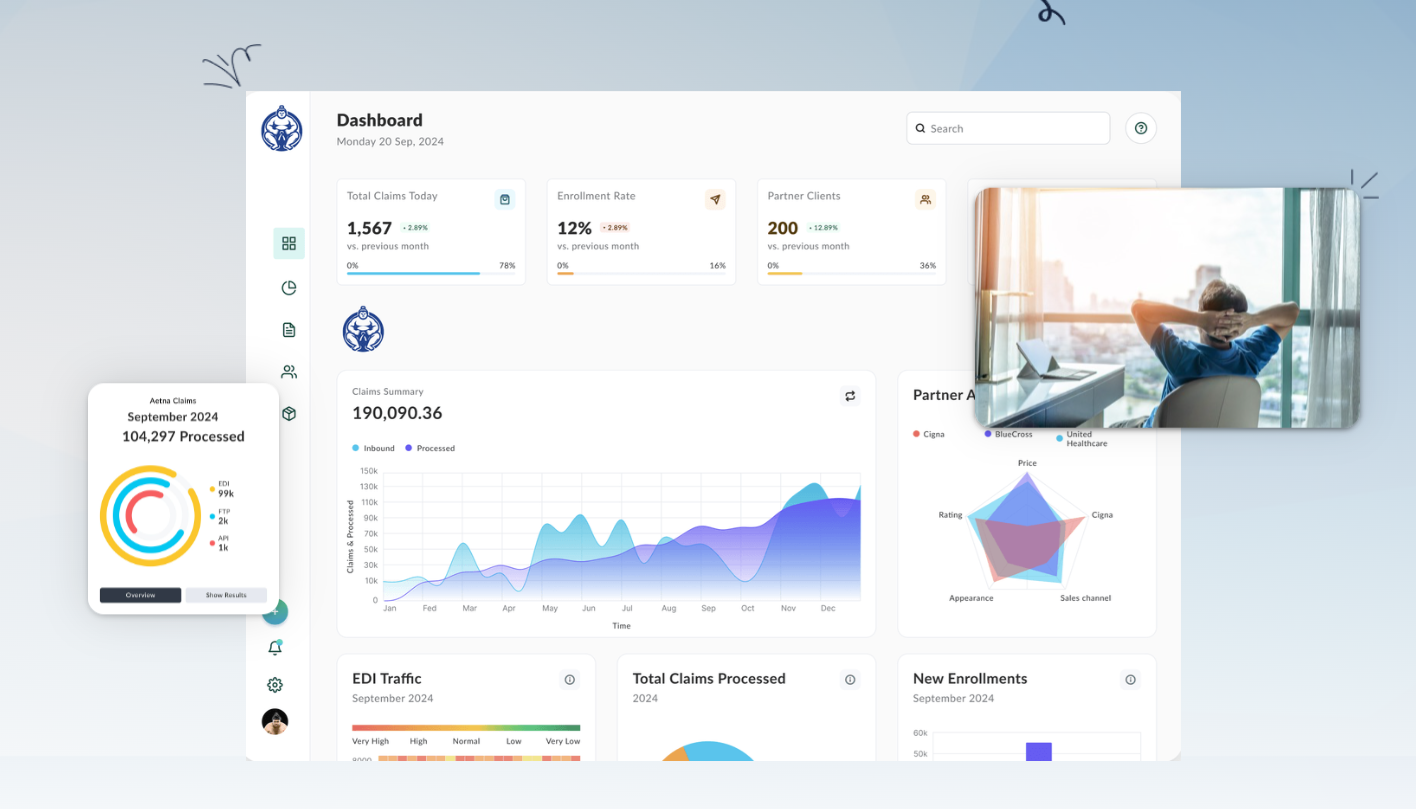Preparing for the 2025 HIPAA EDI Front-End Updates: What Payers Need to Do Now


The healthcare insurance landscape continues to evolve with the January 2025 CMS (Centers for Medicare & Medicaid Services) front-end EDI updates. For many payers, compliance and operational excellence aren’t simple checkboxes; they’re daily challenges across enrollment, eligibility, claims, and member services.
These updates aren’t just a technical hurdle; they’re a chance to modernize how you validate, monitor, and govern data.
Why the 2025 HIPAA/CMS EDI Updates Matter Now
CMS’s Combined Common Edits/Enhancements Module (CCEM) updates for January 1, 2025 (effective) and January 6, 2025 (implementation) expand front-end edits and require contractors to update validation logic. The net effect is stricter format/content checks up front and clearer auditability downstream. Meanwhile, HHS has proposed strengthening the HIPAA Security Rule—raising the bar on risk analysis, asset inventories, MFA, encryption, incident response, and more (still in NPRM status). Together, these raise expectations for real-time validation, monitoring, and proof of control operation.
What’s different about this cycle:
- Stricter format compliance: Front ends are expected to catch broader format/content issues before transactions proceed.
- Enhanced traceability: Evidenced, end-to-end audit trails of receipt, edits, corrections, and hand-offs.
- SLA scrutiny: Delays in addressing flagged items can create compliance risk if not monitored and resolved promptly.
Note: X12 Version 5010 remains the adopted HIPAA standard for non-retail-pharmacy transactions; confirm your trading partners’ adherence as you tighten front-end checks.
The Practical Impacts for Health Insurers
- Higher volume & mixed inputs: Not just X12—CSV, XML, Excel, and positional files from employers, brokers, and TPAs still need to be validated against HIPAA/payer rules before they touch core systems.
- Real-time compliance monitoring: You’ll need demonstrable evidence that every failed or error-flagged transaction was addressed within defined timeframes.
- More business-user visibility: Eligibility, claims, and support teams need self-serve access to transaction status and error details to avoid IT bottlenecks.
Top Challenges and Risks
- Legacy systems can’t keep up: Homegrown/bolt-ons often struggle with multi-format ingestion plus true real-time checks, creating bottlenecks and SLA risk.
- Visibility gaps: Without unified dashboards for front-end status/error tracing, audits get harder and member/provider satisfaction suffers.
- Rework and penalties: Missed front-end validation can cause rejected claims, backlogs, and penalties.
What Forward-Thinking Payers Are Building
- End-to-end, multi-format standardization: Validate every inbound transaction (EDI 834/837 and non-X12 files) against HIPAA and payer rules; transform to a common model; track from receipt to completion.
- Real-time monitoring with automated alerts: Move from batch logs to instant notifications and SLA countdowns on actionable dashboards.
- Audit-ready reporting: Generate defensible audit trails showing what was flagged, when, by whom, and how it was resolved.
- Role-based access beyond IT: Give operations and compliance teams secure, least-privilege access to investigate and resolve issues faster—consistent with emerging Security Rule expectations.

EDI Sumo’s Perspective: Turning Compliance into an Advantage
- Unified multi-format ingestion: Standardize and validate EDI, CSV, XML, and flat files at the front end—no pre-mapping marathons.
- Real-time SLA monitoring: Instant visibility into receipt, errors, and remediation activity helps prevent audit findings and penalties.
- Role-based, self-serve data access: Put live eligibility and claims data in the hands of support and compliance while maintaining least-privilege.
- Compliance built in: Processes align to HIPAA and payer rules so data stays audit-ready and discrepancies are contained early.
Practical Checklist for the Front-End Updates
- Inventory all intake points, including non-X12 feeds.
- Assess format standardization gaps where manual conversion or mapping introduces risk.
- Automate front-end validation and remediation in real time.
- Stand up dashboards and alerts with SLA timers from file arrival.
- Expand role-based access for business users; implement MFA and access governance in line with proposed Security Rule updates.
- Build an audit-ready trail of timestamped events, corrections, and approvals.
Managing Change Efficiently
- Treat compliance as continuous: Ongoing monitoring and process tuning, not point-in-time prep.
- Unify IT and business views: Shared dashboards and metrics keep everyone aligned.
- Choose modular, interoperable solutions: Fill compliance gaps without ripping out working systems.
Take EDI Compliance Off Your Mind
If front-end edits, SLA clocks, and audit trails are keeping you up at night, you’re not alone. See how EDI Sumo helps payers avoid penalties, improve member and provider experience, and give teams real control—without a massive rebuild. Schedule a demo and update your EDI program with confidence.


.png)





.png)

.png)


.png)
